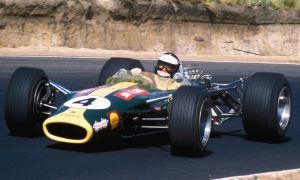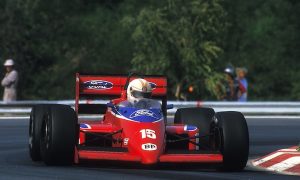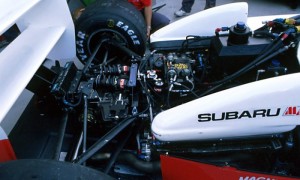Much has been written lately about Honda's return to Grand Prix racing with McLaren this year. But few recall the driver who actually spearheaded the Japanese manufacturer's efforts when it decided to enter the big time on its own back in 1964.
Fewer drivers experienced a more unusual and surprising entry into Formula 1 than Ronnie Bucknum. As a successful sports car driver in the early 60s, the American held some impressive credentials. Yet they still appeared meagre to justify a graduation overnight to fully fledged Grand Prix driver status. That is exactly what happened however, much to the bewilderment of the chosen one himself, as Bucknum once recounted.
"A guy from Honda had seen me race at Sebring, and a few days later I got a phone call from their American representative who said they wanted me to test their new Formula 1 car! I thought it was a joke and I went to a meeting expecting to be stood up. A short time later, I was on a flight to Japan."
The fact that Ronnie had never even sat in an open-wheel race car, let alone raced one, appeared to be of no importance to Honda, who itself was just starting to manufacture road cars, its commercial success centred exclusively around motorcycles up to that point. Perhaps Yoshio Nakamura, the man responsible for Honda's F1 endeavour, thought the driver's lack of an international racing pedigree was a prerequisite so they could then test and race their machine without raising undue expectations.
When the first Honda Formula 1 car was rolled out at the German Grand Prix in the summer of '64, team and driver were both thrown in at the deep end of Grand Prix racing on the daunting Nürburgring. Bucknum, as talented as he may have been, certainly had his work cut out for him. Testing prior to the race had been limited, while a visit to the British Grand Prix a few weeks earlier was his first encounter with F1 as well as his first ever trip to Europe!
Given the circumstances and the teething problems associated with any new racing car, Ronnie acquitted himself well, starting last but overtaking a few drivers and lasting 12 of the 15 laps before steering problems put him out of the race. At Monza a month later, he ran as high as seventh before the engine overheated. His performance encouraged Honda to keep him on a team which added fellow-Californian Richie Ginther to its formation in 1965.
"Richie's arrival was a real bonus," Ronnie remembered. "His development skills improved the car dramatically and we really thought we had a winner on our hands.”
Unfortunately, another steering failure during a pre-season test in Japan sent Bucknum into the barriers. A broken leg deprived him of precious track time and relegated his status to a clear number two to Ginther.
When the ’65 season got underway, the first four races were met with an equal number of retirements while tension also grew between Bucknum and his high-strung team mate. After the French Grand Prix at Clermont-Ferrand and another poor showing by both drivers, Ginther convinced Honda to concentrate on only one car, his, until reliability issues could be sorted out.
"Yeah, I was out of the car for the next three races but when I came back at Monza, I qualified in front of Richie, which was some consolation,” Bucknum recalls.
In the last race of the '65 season, at Mexico, Ronnie Bucknum scored his only championship points with a fifth place finish in a race which saw the mercurial Ginther provide Honda with its first Grand Prix victory. The following year ushered in a new era for Formula 1 with its 3-litre engine regulation, and Bucknum was called upon by Honda to race in the end-of-season US and Mexican races, his last efforts in F1.










